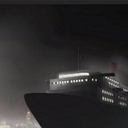The Game Boy and Game Boy Color had tons of RPGs, platformers, and puzzle games. On the other hand, the detective genre only had eight games. Five of them were based on Detective Conan, a popular manga series about a kid detective who solves murder cases. The first two Detective Conan games for the Game Boy were The Underground Amusement Park Murder Case and The Suspicious Gorgeous Train. Developed by Bandai, the gameplay comprised walking around, talking to characters, and examining objects to find keywords. Keywords allow Conan to progress in the case and solve the mystery. Interestingly, the first game had a feature that other games based on the franchise didn’t have. You could accuse suspects without finding all the evidence first. Naturally, this would cause a game over, another feature Branpresto’s trilogy lacked. Both games lengthen their playtime by including three different cases to solve.
Banpresto’s trilogy consisted of The Mechanical Temple Murder Case, The Legendary Treasure of Strange Rock Island, and The Cursed Sea Route. The first game brought the concept of keywords back. You gather keywords by examining objects and talking to other characters. You select a keyword from a menu so Conan can ponder over it. This system may seem simplistic, but it creates a streamlined mystery-solving experience.
A feature that isn’t present in Bandai’s games is the ability to swap Conan with another playable character. This allows Conan to talk to characters that would otherwise brush him off as a kid playing detective. Conan’s inability to see or reach things higher than him requires swapping with an adult. As for the mystery, this game has several of them. There’s a kidnapping, a joke mystery, and a complex murder case filled with tricks. Before the game’s finale, the player must complete a multiple-choice quiz. The point of the quiz is to ensure the player has been paying attention to all the details of the case. Selecting the wrong answers lowers your rank after completing the game. You get a higher rank by completing the game quickly, rarely swapping characters, and choosing the right answers during the quiz. This is no doubt where most of the challenge for the game comes from. Your reward for solving the mystery is watching a lengthy scene where Conan exposes who the culprit is and all the tricks they used.
The second game continues the story from the first one. While the first game’s map comprised a tiny area, this game is set on an island with more areas to explore. As a result, this sequel is longer and harder to complete. More areas mean you’ll spend more time exploring and gathering keywords.
The last game in the trilogy is unavailable to play in English. This is a shame because the setting is perfect for a detective game. Conan and his friends board a cruise ship and stumble into another murder case. Instead of swapping with another character, Conan can take a partner with him to help solve the case. Some events are activated by having a specific partner at a certain time. Likewise, the game’s epilogue changes depending on which partner you end with. Events, different routes to the game’s ending, and mini-games lengthen the game’s playtime. I couldn’t tell what was going on in the story because of the language barrier. The story in this game seems to be more tragic than the previous two.
Banpresto and Bandai did an admirable job of bringing detective games to the Game Boy and Game Boy Color. However, some players may find the gameplay uninteresting since progression is done by talking to characters, examining everything, and constantly selecting keywords. It’s not a hardcore mystery-solving experience but it lets Detective Conan fans play an episode of the show on the go. It’s a shame this genre was rarely explored on both handhelds. There were eight releases from 1991 to 2001 and the majority of them were made to capitalize on a franchise. It must’ve been a genre that wasn’t profitable enough to create for. Likewise, creating a detective game is difficult because of how tricky it is to design. Mark Brown of Game Maker’s Toolkit does a good job of explaining what makes a good detective game and why making one is so tricky. The Detective Conan games are more about guiding Conan and having him do all the thinking than the player piecing together clues to solve the mystery. I recommend The Mechanical Temple Murder Case if you’re interested in what a detective game looks like on the Game Boy.
If you want to play a detective game that predominately uses aspects from the visual novel genre, Kindaichi Case Files: 10th Year’s Invitation might be worth checking out. However, it hasn’t been translated into English.
There’s also the Game Boy color port of Déjà Vu I & II, two point-and-click adventure games inspired by detective novels and movies from the 1940s.
The most obscure detective game for the Game Boy is 三毛猫ホームズの騎士道. It seems to be based on a novel by Japanese novelist Jirō Akagawa. Here’s footage of it.
List of detective games for the Game Boy/Game Boy Color:
Game Boy
1991
三毛猫ホームズの騎士道
1996
Detective Conan: The Underground Amusement Park Murder Case
1998
Detective Conan: The Suspicious Gorgeous Train
Game Boy Color
1999
Déjà Vu I & II
2000
Detective Conan: The Mechanical Temple Murder Case
Detective Conan: Legend of the Treasure of Strange Rock Island
Kindaichi Case Files: 10th Year’s Invitation
2001
Detective Conan: The Cursed Sea Route
